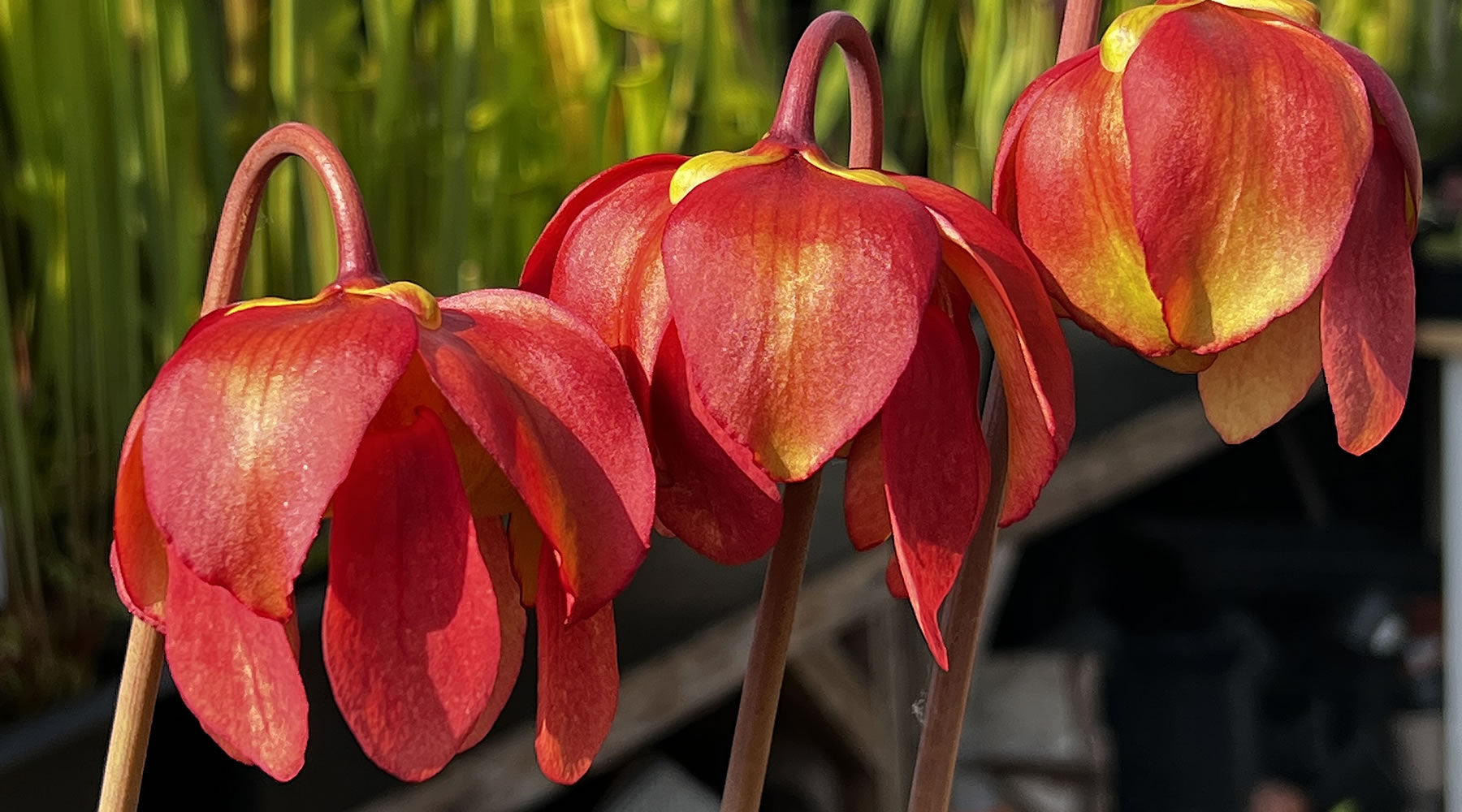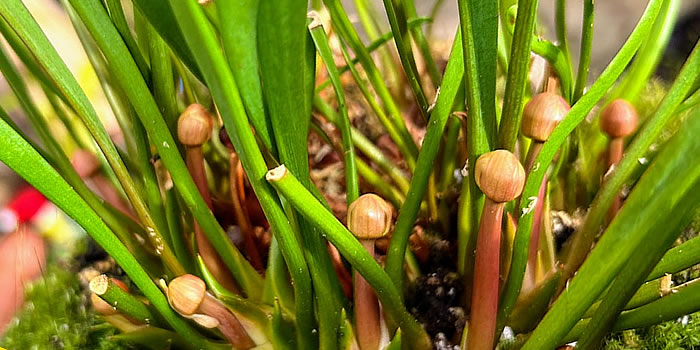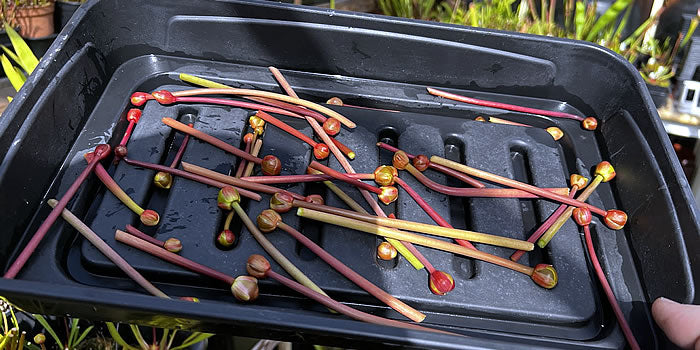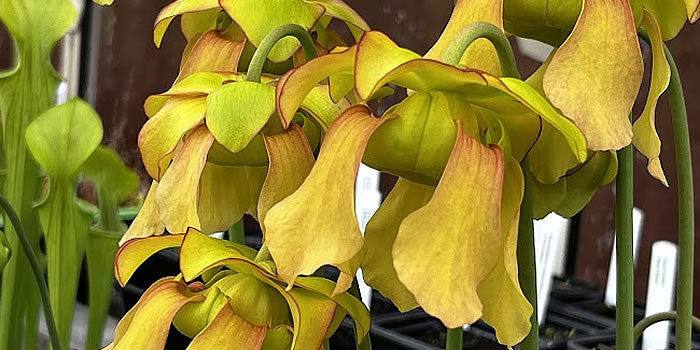
Send us a message

Sarracenia, more renowned for their unique pitcher-shaped leaves designed to trap insects, also produce striking flowers. However, the question often arises at this time of year: Should you cut off Sarracenia flowers? The answer to this question varies depending on who you ask, but I'm hoping that once you understand the pros and cons of removing Sarracenia flowers, it will help you make an informed decision about what you want to do.

The most compelling argument for removing Sarracenia flowers is energy conservation. Flowering requires a significant amount of energy from the plant. By cutting off the flowers, you can redirect this energy towards the growth and health of the pitchers, which are the plant's primary means of nutrition through insect capture.
When you remove the flowers, the plant can focus more on producing and maintaining its pitchers. This can result in more robust and numerous pitchers, which can be particularly beneficial if you are growing Sarracenia primarily for its insect-trapping capabilities.
When dying, flowers can sometimes make a bit of a mess or develop fungal diseases, which can spread to other parts of the plant. Cutting off the flowers can help keep your collection free of decaying organic matter, keeping your Sarracenia healthier.
Although flowers typically develop before the new season's pitchers, there can be some cross-over with both present at the same time. Sometimes, newly developed pitchers can get caught inside the over hanging flowers causing the pitcher to grow deformed.

Sarracenia flowers are undeniably beautiful and offer a unique aesthetic to your collection. By removing the flowers, you miss out on this natural beauty, which can be a significant downside for many growers.
If you are interested in propagating your Sarracenia through seeds, cutting off the flowers is counterproductive. The flowers are necessary for seed production, so removing them eliminates the possibility of harvesting seeds.
Some gardeners prefer to let their plants go through their natural life cycles, which includes flowering and seed production. Cutting off the flowers can disrupt these natural cycles and potentially stress the plant (I personally do not see this).

Whether or not you should cut off Sarracenia flowers depends on your priorities and the specific circumstances of your plant. If your main goal is to maximize the health and vigour of the pitchers, then removing the flowers might be the right choice. However, if you enjoy the aesthetic of the flowers or are interested in seed production, you might choose to leave them intact.
Life is all about making compromises, so here's what I do with my Sarracenia flowers. I remove all but one flower from my plants. This enable me to do the following whilst ensuring maximum energy goes into pitcher production and a larger rhizome for the Winter;
Allowing a healthy Sarracenia to fully flower will not harm it. Removing a Sarracenia's flowers will not harm it. So, do what you like and enjoy your plants!
Sarracenia × moorei X oreophila
Here's an interesting Sarracenia alata! This is an areolate form which is relatively unusual for this species. Areoles are small windows on the pi...
View full detailsThis is a beautiful Sarracenia that arguably looks better in the flesh than in photographs. The lip develops into a defined red which looks great a...
View full detailsThis is an attractive Sarracenia oreophila both in shape and pattern. As the name suggests it is heavily veined with the veins getting darker as th...
View full detailsSarracenia × miniata is a hybrid of Sarracenia minor and Sarracenia alata. Both parent species influence the shape of this plant with the distincti...
View full detailsThis vigorous clone of Sarracenia flava is a great plant if you want an easy-to-grow, nice-sized, and hard-as-nails Sarracenia flava var. flava. Th...
View full detailsIP-X125, JS-H155
Beautifully blushed with copper on the lid, this Sarracenia flava var. cuprea is a great example of a classic copper-top Sarracenia flava. A vigoro...
View full details